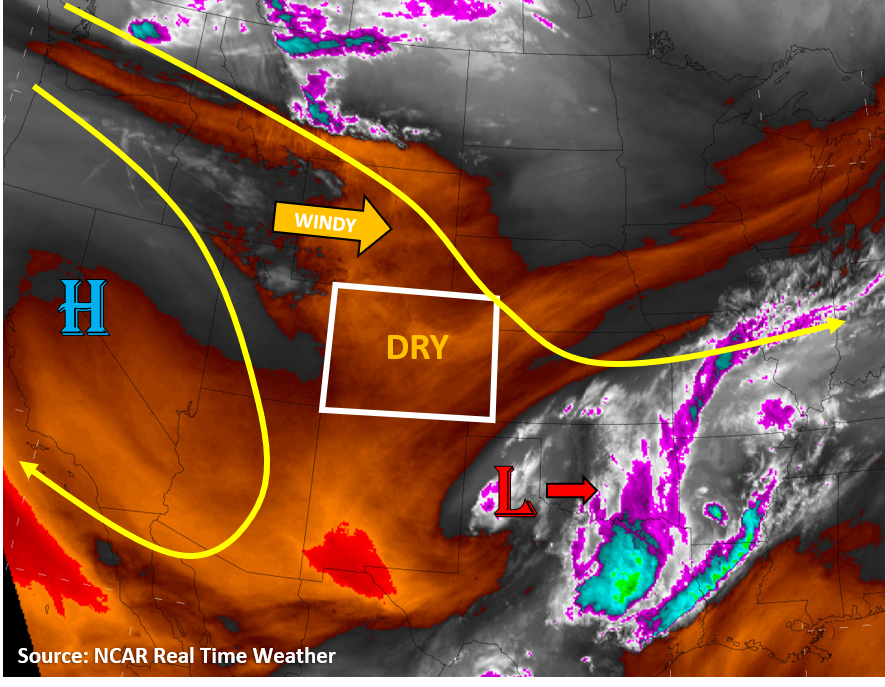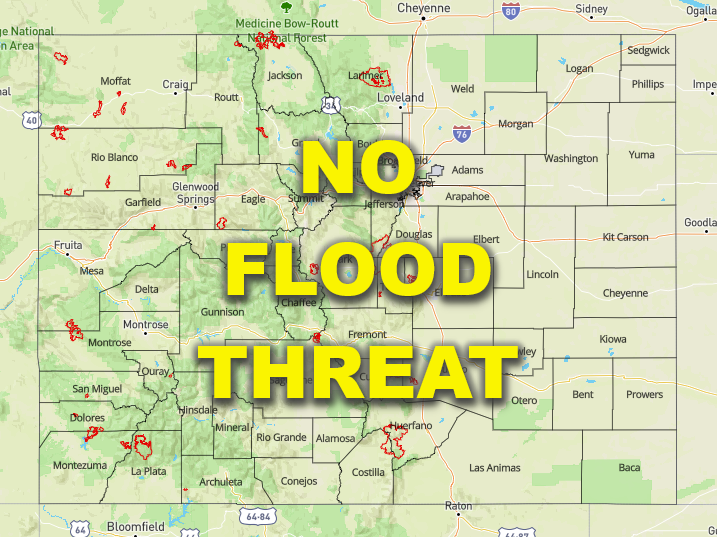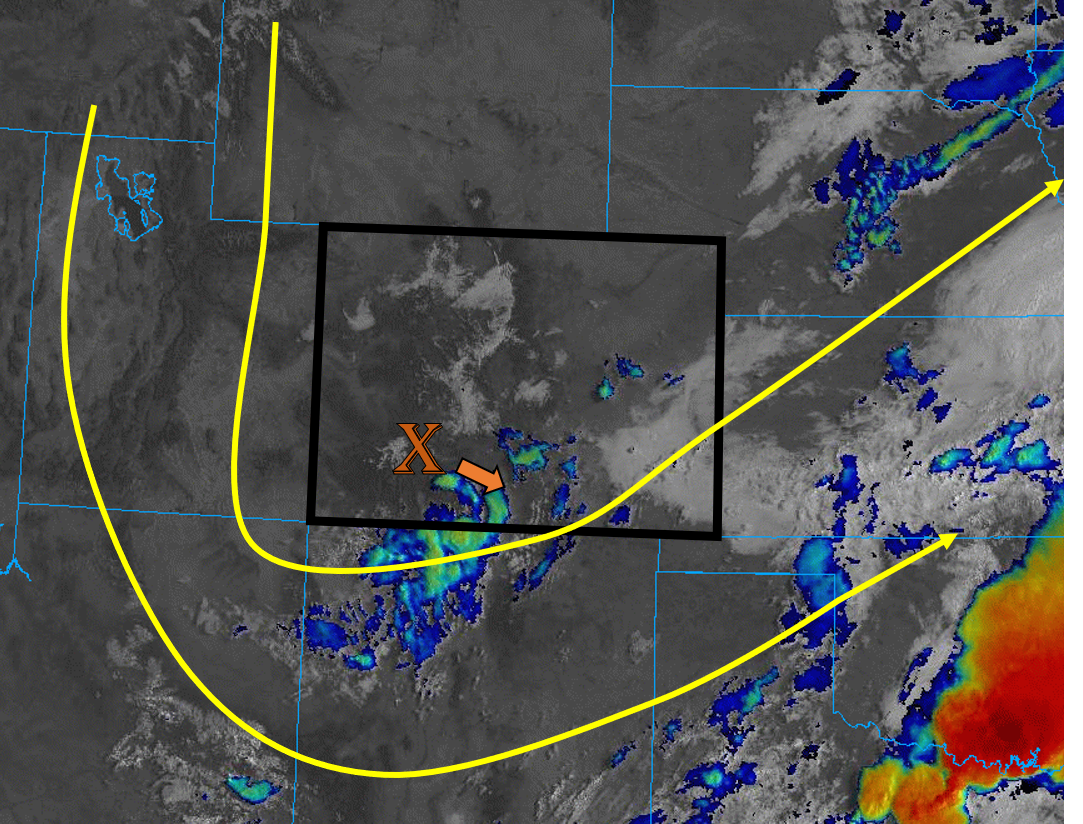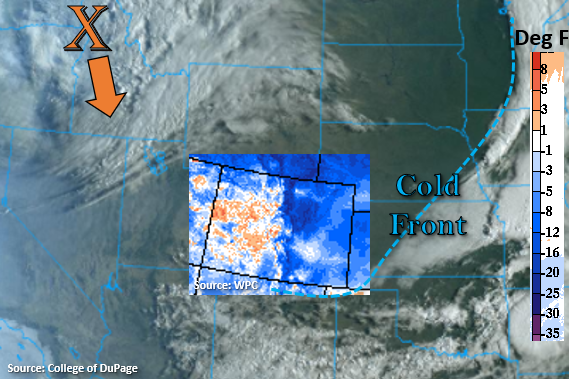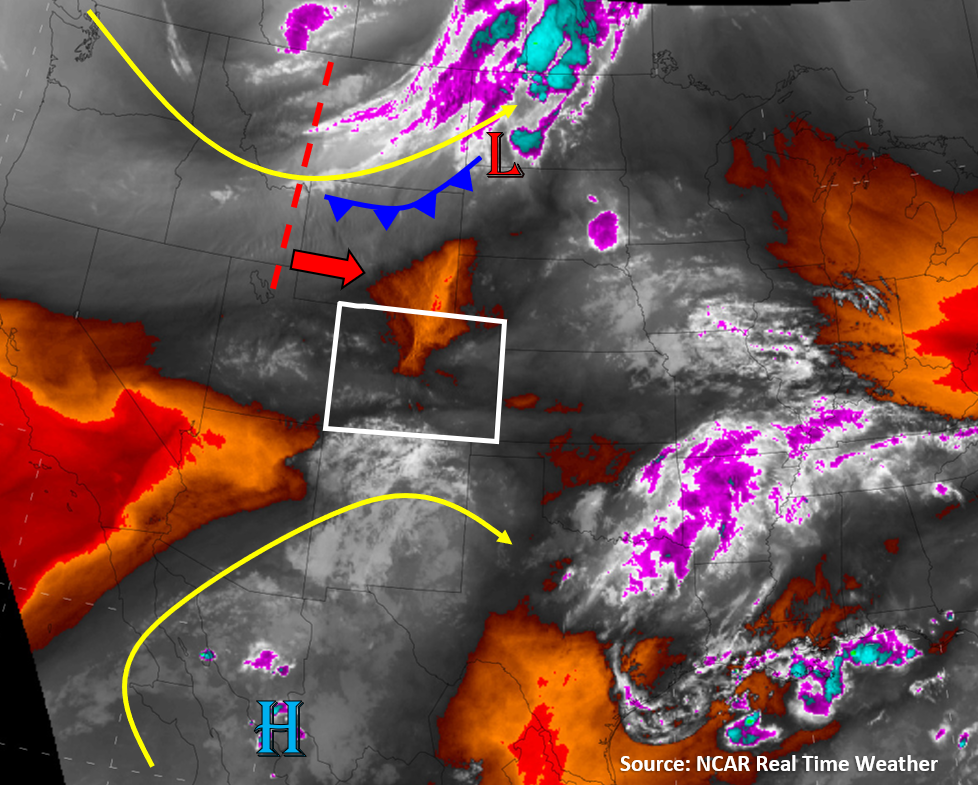Issue Date: Wednesday, September 2nd, 2020
Issue Time: 09:15AM MDT
— Flooding is NOT expected today
Dry, sinking air is in place over Colorado today as the low pressure system that moved through Colorado the last 36 hours has moved southeast into the southern US Plains (see image below). This dry air aloft, indicated by the orange colors on the water vapor satellite image below, will mix in with already low surface moisture across the state (dew points in the 30Fs and 40Fs) to create almost no chance of rainfall. Additionally, sinking air motions have set up a strong cap over Colorado, which is visible in this morning’s soundings. This cap will further prevent any convection from firing and promote clear skies statewide. A strong polar jet stream and large-scale trough to our north will increase winds over Wyoming and Montana, but some gusty winds could work their way into far northern Colorado. These stronger winds, along with dry air, will increase fire danger along the northern tier of Colorado. Temperatures will increase today when compared to yesterday, with high temperatures near or slightly above average across the state. Late tonight and into tomorrow morning, a cold front will work its way through the plains of eastern Colorado. No precipitation is expected along the front, due to its nocturnal arrival and limited moisture, but some strong gusts (up to 55 mph) will be possible over the eastern plains. No flooding is expected in Colorado today.
Today’s Flood Threat Map
For more information on today’s flood threat, see the map below. Hover over the threat areas for more details, and click on burn areas to learn more about them. For Zone-Specific forecasts, scroll below the threat map.
Zone-Specific Forecasts:
Northeast Plains, Urban Corridor, Front Range, Palmer Ridge, Raton Ridge, Southeast Mountains, & Southeast Plains:
The weather should be quite pleasant today with plenty of sunshine and temperatures near to slightly above average in the mid to upper 80Fs. Other than a few fair weather cumulus over the high terrains and Southeast Plains, it should be a clear day. No precipitation is expected due to a strong cap and plenty of dry air. Enjoy the nearly smoke-free, clear air and views of the mountains once again.
Grand Valley, Northwest Slope, Northern Mountains, Central Mountains, Southwest Slope, San Juan Mountains, & San Luis Valley:
Mostly sunny and near average high temperatures today. A few cumulus may develop over the high terrains with diurnal heating and upslope mountain flows, but no precipitation is expected. Some gusty winds near the Colorado/Wyoming border will increase the fire danger slightly this afternoon, so be cautious and avoid activities that could cause sparks.
